#visual continuum
Explore tagged Tumblr posts
Text

.310.
#graphic design#illustration#graphic art#digital art#geometry#linework#digital design#design#space#art#visual continuum#visual art#art direction#logo#logo design#illusion#square#graphics#poster design
73 notes
·
View notes
Text





next art dump!! some art for a project C:
6 notes
·
View notes
Text
https://www.washingtonpost.com/science/2023/06/28/gravitational-wave-background-nanograv
The mind-bending finding suggests that everything around us is constantly being roiled by low-frequency gravitational waves
By Joel Achenbach and
Victoria Jaggard
June 28, 2023 at 8:00 p.m. EDT
The very fabric of the cosmos is constantly being roiled and rumpled all around us, according to multiple international teams of scientists that have independently found compelling evidence for long-theorized space-time waves.
The claim that telescopes across the planet have seen signs of a “gravitational wave background” has sent a thrill through the astrophysics community, which has been buzzing for days in anticipation of the papers that were unveiled late Wednesday. The discovery seems to affirm an astounding implication of Albert Einstein’s general theory of relativity that until now has been far too subtle to detect.
In Einstein’s reimagined universe, space is not serenely empty, and time does not march smoothly forward. Instead, the powerful gravitational interactions of massive objects — including supermassive black holes — regularly ripple the fabric of space and time. The picture that emerges is a universe that looks like a choppy sea, churned by violent events that happened over the course of the past 13 billion-plus years.
The gravitational wave background, as described by the astrophysicists, does not put any torque on everyday human existence. There is not a weight-loss discovery in here somewhere. A burble of gravitational waves cannot explain why some days you feel out of sorts. But it does offer potential insight into the physical reality we all inhabit.
“What we measure is the Earth kind of moving in this sea. It’s bobbing around — and it’s not just bobbing up and down, its bobbing in all directions,” said Michael Lam, an astrophysicist at the SETI Institute and a member of the North American Nanohertz Observatory for Gravitational Waves (NANOGrav), a team largely based in North America. The NANOGrav team released the findings in five papers that were published Wednesday in the Astrophysical Journal Letters.
Teams in Europe, India, Australia and China also observed the phenomenon and planned to post their studies at the same time. The simultaneous release of papers from far-flung and competitive teams using similar methodology came only after some scientific diplomacy that ensured no group tried to scoop the rest of the astrophysical community.
“We’ve been on a mission for the last 15 years to find a low-pitch hum of gravitational waves resounding throughout the universe and washing through our galaxy to warp space-time in a measurable way,” NANOGrav chair Stephen Taylor of Vanderbilt University said at a news briefing Tuesday.
“We’re very happy to announce that our hard work has paid off.”
Discovery from dead stars
The feat builds on previous discoveries of things in the universe that are invisible to the naked eye — pulsars. A pulsar is a type of neutron star, the ultradense remnant of a dead star. It is called a pulsar because it spins rapidly, hundredsof revolutions per second, and emits radio waves in a steady pulse. Pulsars were discovered only in the 1960s, not long after the invention of large radio telescopes.
NANOGrav gathered data from 68 pulsars using the Green Bank Telescope in rural West Virginia, the 27 telescopes of the Karl G. Jansky Very Large Array in New Mexico, and the now-defunctArecibo Observatory in Puerto Rico.
The pulses from these bizarre objects reach telescopes on Earth at such predictable frequencies that they serve as cosmic timepieces, nearly as accurate as today’s most advanced atomic clocks, said Chiara Mingarelli, an astrophysicist at Yale and a member of the NANOGrav team.
Theorists believed that low-frequency gravitational waves could throw off the arrival of pulsar signals. Such low-frequency ripples can have crests separated by years, so the search for subtle swells in the sea of space-timerequired patience. The deviation in the pulsar data is so slight that it took 15 years of observations to come up with solid evidence of these gravitational waves, Mingarelli said.
The NANOGrav team had previously published reports with preliminary suggestions that the background exists, but had said more time was necessary to boost confidence that the signal was real and not just noise.
“Even devising the experiment was a huge mental leap,” Mingarelli said.
The existence of gravitational waves is not in dispute. In 2016, scientists announced that their ambitious four-decade experiment called LIGO, for Laser Interferometer Gravitational-Wave Observatory, had detected waves from the merger of two black holes. But the newly announced waves are not one-shot wonders, and theorists are noodling the many potential explanations for why the cosmic sea ripples in such a fashion.
Supermassive black holes are the favored explanation.
Most galaxies are home to supermassive black holes in or near their central region. These black holes certainly deserve the “supermassive” label: They typically have the equivalent mass of millions or even billions of suns. By contrast, “stellar mass” black holes are pipsqueaks, with masses akin to 10 or 20 or 30 suns.
Galaxies rarely collide, but the universe is vast, there are many billions of galaxies, and they have had plenty of time to drift into one another. During a galactic meetup, theorists say, the supermassive black holesat the cores of the two galaxiesfirst will do a gravitational dance. They can orbit each other for millions of years, Lam said. This pairing is known as a supermassive black hole binary.
The swirling dance disturbs the fabric of space-time sufficiently to generate very low-frequency gravitational waves that travel across the universe at the speed of light, scientists believe. Over time, energy leaks from the dance party, as it were, and the supermassive black holes ease closer together, their orbital period shortening to just a few decades. At that point, the wavelengths begin to reach the frequencies detectable by NANOGrav, Lam said.
“So at this point in our measurements, we cannot definitively state what sources are producing the gravitational wave background signal,” NANOGrav team member Luke Kelley, an astrophysicist at the University of California at Berkeley, said at the Tuesday news briefing. However, he said, the data is a compelling match for theoretical predictions.
Theorists are “having fun” coming up with other possible sources for the low-frequency signal, he added. But “if it’s not coming from supermassive black hole binaries, we would need to come up with some explanation of where those supermassive black holes are hiding, and why we’re not seeing their gravitational waves.”
A new astronomical era
No matter the signal’s source, the announcement of a gravitational wave background represents a milestone in the embryonic field of gravitational wave astronomy.
Just as some astronomers use different wavelengths of light to probe the cosmos, they can now look for different types of gravitational waves. The low-frequency waves announced Wednesday wouldn’t be detectable by LIGO, and the opposite is also true: NANOGrav and similar efforts using pulsars could not detect the kind ofhigh-frequency waves from the unimaginably violent stellar-mass black hole mergers seen by LIGO.
Lam said the next goal is to pair specific gravitational waves with potential supermassive black hole binaries detected through more traditional forms of astronomy. In other words, rather than just saying we’re picking up signs of lots of waves, the astronomers could say this particular wave right here came from that place over there.
The announcement carries an echo of another milestone in the history of cosmology. In 1965, two physicists at Bell Labsreported that they had detected the signal of something previously theorized: the cosmic microwave background radiation. That residual glow offered landmark evidence that the universe was created by the big bang.
Maura McLaughlin, co-director of the NANOGrav Physics Frontiers Center, said at the Tuesday briefing that the next step will be for the international teams to combine their independent data into one “uber data set” that should show an even clearer signal of the gravitational wave background — and maybe even the first detection of a supermassive black hole binary.
“We’re opening up a completely new window … on the gravitational wave universe,” she said.
The work, she said,should offer deeper insight into the ways galaxies form and evolve. It might even reveal exotic new physics that would alter our fundamental understanding of the cosmos: “It should be really, really exciting.”
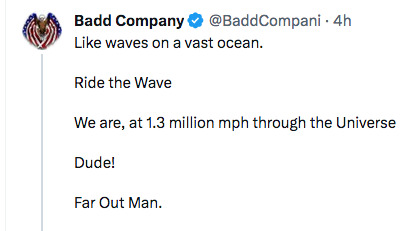
#eddies#eddies in the space-time continuum#well tell him to get out#it is worth noting that one of my main impressions from a series of investigative shroom journeys was seeing a sort of 3d grid#the grid was my mind trying to visualize the waves surrounding thing and the grid kinda worked. Next dimension visualization.
15 notes
·
View notes
Note
how do you extract BB story mode sprites? I’ve been trying to get my hands on these sprites of Mu/Noel(?) for so long but no luck(not in it’s full body glory but yk..), all I know is that it appears in BBCS and maybe BBCP and BBCF too??

The files for this version of her story portraits were not in CF. I did find them in CS though. However, like all of the other story portrait files, they're broken up between a main body with no face and the facial expression images that they overlap on top of the body. So if you want a proper image, you'll need to use an image editor to layer the face on top of the body yourself. However, I'll save you the time of extracting the files at least and simply did so myself and put them in a .zip in a Google Drive: https://drive.google.com/file/d/1e4zvkqXY8PH2XI5_XN-LA0snxglb0tMj/view?usp=sharing
However, if you actually are curious on how I extract files, I use this tool called, GeoArcSysAIOCLITool.
Found the story mode portrait files for Mu-12 in this directory within the game's installation folder: "BlazBlue Chronophantasma Extend\data\Story\Avatar\mu" Took the .pac files in that folder, put them in "GeoArcSysAIOCLITool\Batch\PAC\GeoArcSysAIOCLITool - PAC - Unpack Recursive.bat" to unpack all of the .pac files. And then that should produce a folder called "mu_unpack" which contains even more folders with .hip files in them, the image format ArcSys uses in BB games.
Then I placed that folder in "GeoArcSysAIOCLITool\Batch\GeoArcSysAIOCLITool - HIP.bat" to convert all of the .hips into .pngs. Then I just used the Windows Explorer search option to find all of the .pngs, pressed Ctrl+A and then saved them all into a .zip to put them into one place instead of digging through each folder.
#blazblue#mu-12#modding#story mode portraits#files#file extraction#bbcs#blazblue continuum shift#story mode#visual novel#vn
4 notes
·
View notes
Photo
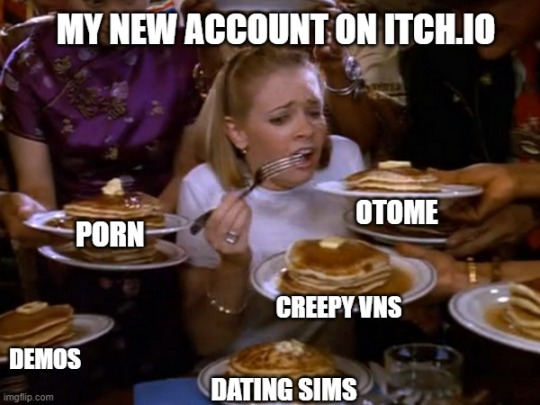
This is me today and I am pleased as punch about it!
#itch.io#otome game#visual novel#datingsim#please may i have some more#i've been ever so good#i'll need to break the space-time continuum to finish all these but okay#give me fuel give me fire give me that which I desire
6 notes
·
View notes
Photo

Kuda, wild horse god.
#dnd#Continuum#when I was approached to create the concept visual for this god I was immediately like yes please!#I like drawing horses#and this one reminded me of black stallion#a glorious beast brought to heal to serve other gods
10 notes
·
View notes
Text

[ finally a ] tag dump //
* ⊹ 。*´ ❪ author. ❫ ››› ㅤ we are bees then﹐ our honey is language .
* ⊹ 。*´ ❪ promotion. ❫ ››› ㅤ come﹐ little bees﹐ the flowers have your breakfast ready .
* ⊹ 。*´ ❪ announcement. ❫ ››› ㅤ we must dissent from apathy﹐ we must dissent from the fear .
* ⊹ 。*´ ❪ prompt. ❫ ››› ㅤ doves and pigeons can also be trained to send messages .
* ⊹ 。*´ ❪ anonymous. ❫ ››› ㅤ who is this stranger﹐ who comes in the darkness ?
* ⊹ 。*´ ❪ continuum. ❫ ››› ㅤ time doesn’t erase the demons we don’t see .
* ⊹ 。*´ ❪ euphuism. ❫ㅤ ››› ㅤi am shouting at the empty and always running .
* ⊹ 。*´ ❪ episteme. ❫ㅤ ››› ㅤyou strike a match on yourself to keep others warm .
* ⊹ 。*´ ❪ visuals. ❫ㅤ ››› ㅤi ain't good﹐ i ain't bad﹐and i sure as hell ain't ugly .
* ⊹ 。*´ ❪ imagery. ❫ㅤ ››› ㅤthe graveyard shift has a certain quality to it .
* ⊹ 。*´ ❪ thesis. ❫ㅤ ››› ㅤnothing of me is original : i am the combined effort of everyone i've ever known .
* ⊹ 。*´ ❪ theory. ❫ㅤ ››› ㅤthe revelation of a submerged self .
* ⊹ 。*´ ❪ behavior. ❫ㅤ ››› ㅤpretend to be a cynic﹐ but i am really a dreamer .
#* ⊹ 。*´ ❪ author. ❫ ››› ㅤ we are bees then﹐ our honey is language .#* ⊹ 。*´ ❪ promotion. ❫ ››› ㅤ come﹐ little bees﹐ the flowers have your breakfast ready .#* ⊹ 。*´ ❪ announcement. ❫ ››› ㅤ we must dissent from apathy﹐ we must dissent from the fear .#* ⊹ 。*´ ❪ prompt. ❫ ››› ㅤ doves and pigeons can also be trained to send messages .#* ⊹ 。*´ ❪ anonymous. ❫ ››› ㅤ who is this stranger﹐ who comes in the darkness ?#* ⊹ 。*´ ❪ continuum. ❫ ››› ㅤ time doesn’t erase the demons we don’t see .#* ⊹ 。*´ ❪ thesis. ❫ㅤ ››› ㅤnothing of me is original : i am the combined effort of everyone i've ever known .#* ⊹ 。*´ ❪ episteme. ❫ㅤ ››› ㅤyou strike a match on yourself to keep others warm .#* ⊹ 。*´ ❪ imagery. ❫ㅤ ››› ㅤthe graveyard shift has a certain quality to it .#* ⊹ 。*´ ❪ euphuism. ❫ㅤ ››› ㅤi am shouting at the empty and always running .#* ⊹ 。*´ ❪ behavior. ❫ㅤ ››› ㅤpretend to be a cynic﹐ but i am really a dreamer .#* ⊹ 。*´ ❪ theory. ❫ㅤ ››› ㅤthe revelation of a submerged self .#* ⊹ 。*´ ❪ visuals. ❫ㅤ ››› ㅤi ain't good﹐ i ain't bad﹐and i sure as hell ain't ugly .#tag dump //
0 notes
Text

* ⊹ 。*´ ❪ author. ❫ ››› ㅤ we are bees then﹐ our honey is language .
* ⊹ 。*´ ❪ promotion. ❫ ››› ㅤ come﹐ little bees﹐ the flowers have your breakfast ready .
* ⊹ 。*´ ❪ announcement. ❫ ››› ㅤ we must dissent from apathy﹐ we must dissent from the fear .
* ⊹ 。*´ ❪ prompt. ❫ ››› ㅤ doves and pigeons can also be trained to send messages .
* ⊹ 。*´ ❪ anonymous. ❫ ››› ㅤ who is this stranger﹐ who comes in the darkness ?
* ⊹ 。*´ ❪ continuum. ❫ ››› ㅤ time doesn’t erase the demons we don’t see .
* ⊹ 。*´ ❪ euphuism. ❫ㅤ ››› ㅤi am make - believe. this is an archive. it hurts to be a story .
* ⊹ 。*´ ❪ episteme. ❫ㅤ ››› ㅤanger travels through me﹐ pushes aside everything else in my heart .
* ⊹ 。*´ ❪ visuals. ❫ㅤ ››› ㅤburial by fire is the last mercy: decay is for the living .
* ⊹ 。*´ ❪ imagery. ❫ㅤ ››› ㅤi build a life and i tear it apart﹐ and the sun keeps shining .
* ⊹ 。*´ ❪ thesis. ❫ㅤ ››› ㅤwho am i when i feel ? what dies in me when i am me ?
* ⊹ 。*´ ❪ theory. ❫ㅤ ››› ㅤbut would you know yourself if you weren’t burning .
* ⊹ 。*´ ❪ behavior. ❫ㅤ ››› ㅤthey made you a weapon and told you to find peace .
#* ⊹ 。*´ ❪ author. ❫ ››› ㅤ we are bees then﹐ our honey is language .#* ⊹ 。*´ ❪ promotion. ❫ ››› ㅤ come﹐ little bees﹐ the flowers have your breakfast ready .#* ⊹ 。*´ ❪ announcement. ❫ ››› ㅤ we must dissent from apathy﹐ we must dissent from the fear .#* ⊹ 。*´ ❪ prompt. ❫ ››› ㅤ doves and pigeons can also be trained to send messages .#* ⊹ 。*´ ❪ anonymous. ❫ ››› ㅤ who is this stranger﹐ who comes in the darkness ?#* ⊹ 。*´ ❪ continuum. ❫ ››› ㅤ time doesn’t erase the demons we don’t see .#* ⊹ 。*´ ❪ euphuism. ❫ㅤ ››› ㅤi am make - believe. this is an archive. it hurts to be a story .#* ⊹ 。*´ ❪ episteme. ❫ㅤ ››› ㅤanger travels through me﹐ pushes aside everything else in my heart .#* ⊹ 。*´ ❪ visuals. ❫ㅤ ››› ㅤburial by fire is the last mercy: decay is for the living .#* ⊹ 。*´ ❪ imagery. ❫ㅤ ››› ㅤi build a life and i tear it apart﹐ and the sun keeps shining .#* ⊹ 。*´ ❪ thesis. ❫ㅤ ››› ㅤwho am i when i feel ? what dies in me when i am me ?#* ⊹ 。*´ ❪ theory. ❫ㅤ ››› ㅤbut would you know yourself if you weren’t burning .#* ⊹ 。*´ ❪ behavior. ❫ㅤ ››› ㅤthey made you a weapon and told you to find peace .
1 note
·
View note
Text
Copy, and then Paste! : A Post About Introjection
You know it—the title is based off the Ctrl C and Ctrl V function from computers, but did you know we have our own version too?
Introjection is more than just mimicry or replicating something though, it apparently plays a far more important role than you'd initially thought. Want to know the answer? Let's check it out then! (not a clickbait)
Okay google, what is: to introject
Out of 1253 results, here is the recommended definition,
"Introjection occurs when a person internalizes the ideas or voices of other people" from Therapist Development Center
From the related result, here are top 3 examples: - When you internalize the idea of "crying is for the weak" - When you believe that you're not good enough - "I must dress pretty so i am socially accepted"
You can introject many sorts of things such as behaviors, mindsets, beliefs, traits, concepts or even feelings.
Articles on: How introjection happens
Well, it is a very complex process on how introjection happens, or why. But this search engine (me) will try to explain the whole concept to you in a simplified manner!
We have started to introject many things ever since a child, the world is difficult on its own to learn from scratch, which is why taking in qualities and behaviors from what we expose ourselves to the most shapes how we navigate the world.
Call it a framework to work with,, it is used to learn manners, or understand how to respond to a certain situation by observing, then, these values are internalized, importantly shaping us as we grow older. Though, introjection doesn't understand good or bad qualities as they're seen as "the truth" to one's mind, therefore it's possible to introject literally anything.
It can also function as a defense mechanism, where we adopt these values and internalize them in order to cope, or to repeat similar tactics that proved to be successful for the previous person. For example, if you were bullied, bullying back will mitigate the hurt you could receive in the future. This generally represents fictives and persecutors respectively, though varies for each person.
Fictive.. Factive.. What is that, Siri??
There are many kinds of introjects.. they can be based from fictional medias, real people, or even concepts like art or songs. But what the??
Easy now, sure the amount of introject kinds could throw anyone off, but the concept still stands true, though it gets trickier when it comes to other introjected concepts such as OCtives or Songtives, which i will explain too.
Thing is, what will help you understand many different kinds of them existing, is envisioning that introjection operates in a spectrum. Thats right, they are on a scale.
The idea is that introjection exists in a continuum. Just like how alters have varying degrees of development (a shard, or fragment), this scale is not meant to simplify or categorize things in its literal sense, but to help visualize and understand the level of complexities.
The level of complexity of a scale lies at what it/you introjected: Lvl 1: Introjection - the most basic forms can start from traits, ideas, or concepts. Example: Alters that formed off songs, art, thoughts, and even feelings. Lvl 2: Internalization - then getting to more fledged values like behaviors, life views. Example: Persecutors who had internalized negative attitudes from abusers. Lvl 3: Identification - and then lastly, when you identify the qualities of a specific person. Example: General Introjects, Fictives, Factives. (identification varies in intensity)
Sometimes, these introjected qualities are absorbed by multiple alters or by oneself. If it does not get absorbed to a pre-existing part, a new alter will be created to contain these qualities that it has internalized instead.
An introject possessing multiple sources from different aspects is also possible due to this process. (these three terms are originally interchangeable as they are under an umbrella of introjection, but i prefer to use them to represent each levels)
There's no result on the internet..
"What bests explains multiple introjects of the same source? What's with source separation? What about the memories that comes with said source?" Might be the search history in your phone right now, It's okay to stop searching, your answers are right under these fingertips!
Duplication of sources
When it comes to multiple parts of the same or similar source, it can be due to reasons like current hyperfixation or resonating with the qualities of said media. It can as be simple as wanting to have the same qualities from the media, too. Lastly, comorbids like autism and BPD plays a factor on how often you will introject.
Even duplicates will not act the same as the other one, which means each can introject different things from the same source, in different intensity or variation or alternative versions of source.
Additionally, being polyfragmented increases the amount of fragments/alters that could form, thus contributing to higher chances of having duplicates.
Source separating
When one introjected the qualities of a person/media, there might be a chance they identify as person/media due to it. The idea is that when one associates these qualities directly to the person, which then has a feedback loop where because the specific qualities are present, means they are that person.
Continuing from the example of bullying to not get bullied, they might see themselves just like the bully from the past due internalizing its behavior, in general this is equivalent to identification. Any negative or positive qualities can be introjected that later grow to identification.
The notion of needing to source separate is not something that have to be forced upon immediately. As it should be a transient process where one has to detach from the current sense of identity with one that is original.
No one can be 100% free from introjection, so source separation would mean minimizing the intensity of identification while developing a more whole sense of true self.
Being attached to a source in some level can be a positive outcome to implement, especially if it reinforces positive emotions or memories. As long it is not causing harm to anyone, since sometimes the urge to become the source or convincing of being one can be destructive.
Source memories
Remember something that had happened to you, but never happened to the body? It doesn't mean the memory itself is entirely fake, it is more to abstract context like how dreams manifests according to how you feel on a specific situation.
Just like dreams, the whole accident may never have happened in reality, but it is reenacting what had happened in the past with its own version/remake.
This happens when the true event is too much to take in or remember. When you cannot remember what truly happened, the somatic and emotional aspects to the trauma is still intact. Which contributes to why these fake memories aren't entirely fake.
Its good to take note that having a memory of going through an event, that doesn't happen bodily, never means you do understand the true experience of such event. It's only the impressions and assumptions of it.
With that being said, you can understand what your source memories are trying to convey by matching up similarities in your current life, or uncover how you feel or think of the event. Then, you can start healing whatever was left unresolved.
A scroll to the end of the web
Basically to reiterate things, we do copy and paste people's qualities for a living. But, not as a mere function like how computers implemented it.
Don't forget to consider who you will be friends with and how it'll impact you socially, and double-check whether you have adopted someone's essence that doesn't serve a meaningful purpose for you. You do become what you are exposed to, just like how you are what you eat.
Feel free to let us know your introject experiences, it could help validate someone else's experience, too!
- j & chaos
#did#actually did#did community#did osdd#did system#dissociative identity disorder#sysblr#plural#system stuff#jeducates
57 notes
·
View notes
Text
Yuri of Absence and The Chair of Yuri: Combining Lesbian Manga and Science Fiction - The Secret Garden
This article was originally written in 2021 as part of The Secret Garden, YuriMother's exclusive series of articles, available only for Patrons. If you want to access other articles and help support Yuri and LGBTQ+ content, subscribe to the YuriMother Patreon.
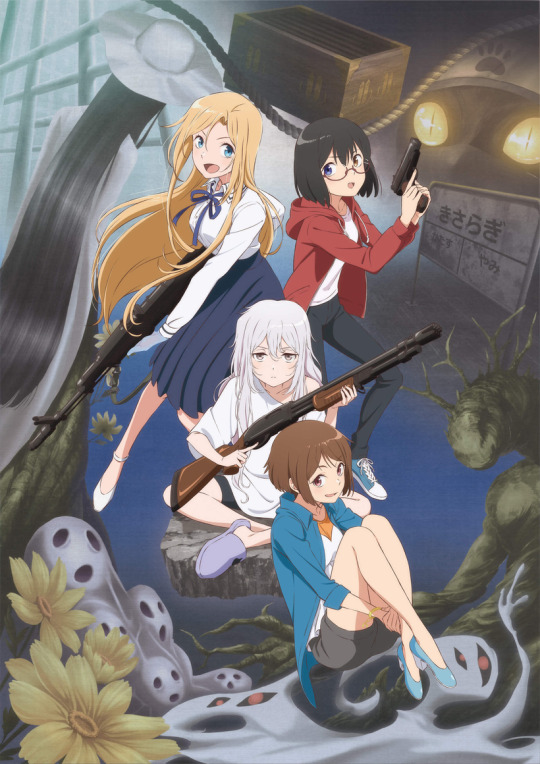
In the “olden days” of Yuri, which is really to say anything in the ‘00s or earlier, there was not much variety in the mainstream Yuri market. If you wanted to read a manga about the romance between two women or watch an anime with clear lesbian elements, choices were between a sweet school story or a classic tragic school Yuri story. As I have mentioned many times recently, one of the most significant advancements in the recent Yuri genre is the advent of sub-genres. Once considered an element or subgenre itself, Yuri hosts various works from isekai to feminist literature. However, one of the most curious and certainly most well-known subgenres is science fiction.
Yuri science fiction is in the spotlight right now, with everything from visual novels like Synergia to webcomics like Ratana Satis’s Soul Drifters. However, one of the most prolific and rightly celebrated titles is Iori Miyazawa’s Otherside Picnic. The series began publishing under Hayakawa’s Bunko JA imprint in 2017, and over the past few years, it exploded onto the scene. It has an upcoming sixth book, a manga adaptation serialized in Monthly Shounen Gangan, healthy overseas publishing, and of course, an anime adaptation helmed by Kase-san and Stiens;Gate director Takuya Sato. It has garnered praise from critics CBR, Anime News Network, and Erica Friedman of Okazu. I wrote glowing reviews for the first few books, complimenting its worldbuilding, pacing, and characters. However, Otherside Picnic did not spring out of anywhere. Indeed, it is the product of gradual shifts in Yuri and sci-fi storytelling and Miyazawa’s genius theories and knowledge of the genres.

The mixture of Yuri and science fiction is not anything new; it predates most other forms of Yuri save Class S school romances. You may not picture many of these when you think of modern Yuri sci-fi, but as early as 1975, we had Yuri stories like Boku no Shotaiken that included small sci-fi elements, in this case, transferring the mind to another body. Over the next two decades or so, a time during which so few Yuri titles surfaced, it is occasionally referred to as Yuri’s “era of Darkness,” multiple titles sci-fi titles including Dirty Pair, Project A-Ko, Bubblegum Crisis, and Iczer featured science fiction settings and Yuri elements. At this time, Yuri was not much of a genre as we think of it today, but more of a factor inserted into a larger narrative. Think of Yayoi and Shion from Psycho-Pass for a more contemporary example. In fact, except for Iczer, none of these titles feature any outright lesbian characters, just female casts with “Yuri-ish” moments of women standing close together and being companions.
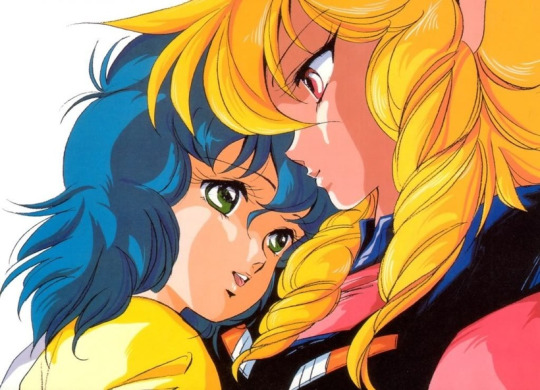
These titles feature two key elements that many current series have shifted further away from, soft sci-fi and Weak Yuri. Soft, as opposed to hard science fiction, is the more established of these two scales. Science fiction can be separated between outlandish and impossible ideas, sometimes known as science fantasy, and those based in reality, research, and the hard sciences such as physics, astronomy, and mathematics. Sorting works between these two labels is, ironically, not an exact science, and fans and critics alike argue about their precise definitions. However, let us consider soft and hard science as a spectrum, with outlandish premises like Dragonball on the soft end and the reality-based concepts of Space Brothers at the other. One can sort most titles along this continuum. M Alan Kazlev does an excellent job dissecting this scale in further detail. Many of the titles we enjoy today, including Otherside Picnic, inhabit this transitory space, as it is not fantasy. Still, its reliance on anthropology and psychology’s soft sciences may put it a small step below more grounded hard sci-fi. Still, it is far above the aliens and superpowered robots in ‘80s anime, so we shall consider it hard sci-fi for the sake of this argument.
*Note: Many science fiction circles use the abbreviation sci-fi for soft science fiction and SF for hard science fiction. For ease of readability and common vernacular, this article uses “sci-fi” for both instances.*
Sci-fi Yuri did not break out of soft science fiction territory until very recently. In the 1990s, Yuri underwent dramatic changes thanks to Sailor Moon and Revolutionary Girl Utena, which helped reform it as a genre rather than a feature. Maria Watches Over Us revived S Yuri traditions, and new titles were set in schools and focused on modern girls’ lives. In the 2000s, Yuri magazines began serialization and featured stories such as Kisses, Sighs, and Cheery Blossom Pink and Strawberry Shake Sweet (both serialized under different names). Despite being primarily aimed at adult women, the magazine found success with male audiences, prompting new stories appealing to men and boys. These works reintroduced action and science fiction into the genre with pieces like Kannazuki no Miko: Destiny of the Shrine Maiden, Blue Drop, and Kashimashi: Girl Meets Girl (Yuriboke does a better job breaking all these down). However, all these were still vehemently in soft sci-fi territory, with Kashimashi’s only surreal element being an alien because the author was, to simplify grossly, unable to fathom the existence of transgender people (coming full circle from Boku no Shotaiken). Possibly the only contemporary mainstream hard sci-fi title to include Yuri and enjoy a modicum of success was Qualia The Purple. However, this series did not have the genre-defining power that later works would.

However, what changes between these series and those mentioned earlier is the Yuri itself. The relationships become much more explicit and central to the plot. You can deliberate whether or not Bubblegum Crisis is sapphic, but just try sitting someone down and arguing that Kannazuki no Miko is not built around the crux of two women holding romantic interest in each other. Yuri science fiction author Gengen Kusano proposes a dichotomy similar to soft and hard sci-fi to analyze these titles, Weak and Strong Yuri. He explains it in his own brilliantly convoluted and philosophical way, but in short, Weak Yuri relies on using logic and the mind to make the real imaginary, while strong Yuri is about emotionalism and realism, making fiction into reality.
Strong Yuri is Yuri that focuses on realism through feelings and emotions. Kusano describes it as fiction characters having real emotions. They have strong connections and affection for each other that are real and powerful. The audience experiences the feelings between the characters as they are felt and portrayed. Think of how emotional the exclamations and love, sorrow, confusion, and affection are in titles like Bloom Into You and Citrus. In a sense, they can be so strong that they transcend their fictional confines and become real, as they are experienced by considers, a stage called “radically Strong Yuri.” Most explicit Yuri, which is not subtext or suggestive content but in-your-face lesbianism, is Strong Yuri, although not all Strong Yuri is outright depictions of lesbianism; it is a square rectangle situation, not all rectangles are squares, but all squares are rectangles.

Weak Yuri is cemented in the areas of thought, logic, and epistemology. It deals with the theory of mind, the ability to attribute mental states to others or ourselves. For example, when we see someone smiling or laughing, we may not feel their emotion ourselves, as we do not have direct access to their mind, but we recognize that they are happy. In Weak Yuri, one uses their theory of mind to observe facts and deduce the existence of a Yuri relationship, even if one is not present. So-called “Yuri-ish” titles like Yuru Camp or K-ON! do not outright state or depict romantic or sexual attractions, but is attributed by the viewers onto characters. Said observer witnesses the interactions between girls and, using that factual and observable data, puzzles out a lesbian attraction they prescribe to the subjects, whether real. Shipping culture relies on Weak Yuri’s logic Kusano’s most extreme, “Radical Weak Yuri,” the relationships of real people, like idols, become imaginary through these projections.

Blue Drop and Kashimashi may have been soft Sci-fi, but unlike the soft sci-fi, Weak Yuri series of the twentieth century, they featured Strong Yuri and placed it more as a central aspect of the work with other elements built around, rather than as a side element. The next revolution in sci-fi Yuri came when hard sci-fi titles began production. A few of the principal players here are Kusano himself, Otherside Picnic Creator Iori Miyazawa, and editor Rikimura Mizoguichi, all of whom feature in the viral Yuri Made Me Human interview of Miyazawa. Most of the theories and ideas discussed in this article, including Kusano’s Weak and Strong Yuri arguments, came from these seminars.

It all started with Kusano’s existential widescreen Yuri baroque proletariat hard sci-fi Love Live AU fanfic of the popular ship NicoMaki, consisting of Nico Yazawa and Maki Nishikino. The revised edition of this story, Last and First Idol, was published in 2016 and became the first debut title to win the prestigious Seiun Award in 42 years. Satoshi Maejima’s post-script essay at the end of the Last and First Idol collection gives far more detail into these works’ history. However, Idol was the first prominent story to feature Yuri in a hard sci-fi narrative. It was not perfect. In fact, in its push to feature gruesome content and insane hard sci-fi that Yuri is pushed to the wayside during most of the story.

*Author’s note: The first time I read Last and First Idol, I was completely unaware of its contents, which was a shocking experience; the story comes with a severe content warning).
Last and First Idol did not create a woven hard sci-fi, Strong Yuri narrative. However, it was a definite proof of the concept, a testament that the sprawling details and imagery of hard Sci-Fi could work with Yuri relationships. Kusano’s next short story, Evolution Girls, which would appear alongside Last and First Idol in the collection of the same name, saw the author focus more on emotionalism and create a Strong Yuri work. Nevertheless, Last and First Idol was a massive success. Future hard proof that Yuri hard sci-fi was coming in force came in December 2018, when Hayakawa Shobo ran a special edition of its long-running S-F Magazine featuring Yuri stories. The issue, planned by Rikimura Mizoguchi, proved so popular for the second time in its then 59-year history, the magazine had to reprint before release.

While Kusano was developing theories on Yuri and Hayakawa Shobo worked to push the public eye onto Yuri sci-fi, author Iori Miyazawa was refining his own Yuri premises, ones that, though he did not know it at the time, would not only see Strong Yuri and Hard sci-fi standing side by side in the same story but would synthesis the two into a unique product that could attract new fans and expand the borders of science fiction and Yuri. The work in question, of course, is Otherside Picnic. This light novel series about girls journeying to another world to hunt creatures from occult internet lore is to date Yuri science fiction’s best execution.

As Miyazawa admits, he strives to create Strong Yuri by focusing on emotionalism and realistic characters. However, such character-driven narratives are often at odds with hard science fiction, which requires dense walls of text to explain the complicated science behind its concepts and world. Miyazawa avoids this trap by utilizing Yuri tropes, specifically scenic Yuri and “Yuri of absence,” and integrating Yuri relationship into these explanatory literary lectures. Examining the latter first, rather than using narrative or exposition dialogue to unravel the intelligence behind the world or elements of science fiction, Miyazawa uses the relationship between Sorawo and Toriko.
In Otherside Picnic, explanations of the mysterious Otherside come primarily from two sources, dialogue and Sorawo’s inner monologue. When Sorawo and Torikko discuss a nuance of the paranormal creatures they investigate, it no longer becomes a large infodump but a Yuri scene about their relationship through their interactions and responses. According to both the strong Yuri theory and Yuri’s traditional definition, these emotions and discussions are the crux of the genre – stories about females’ relationships. Similar emotionalism fills Sorawo’s inner monologues, specifically in the frequent romantic admirations of Toriko. Thus, an explanation existing in that same space becomes Yuri, as it mirrors the same emotions and attraction. Merely by placing the usual exposition into interactions and relationships, Miyazawa was able to open hard science fiction to new readers, who may have been apprehensive before because of these text walls.
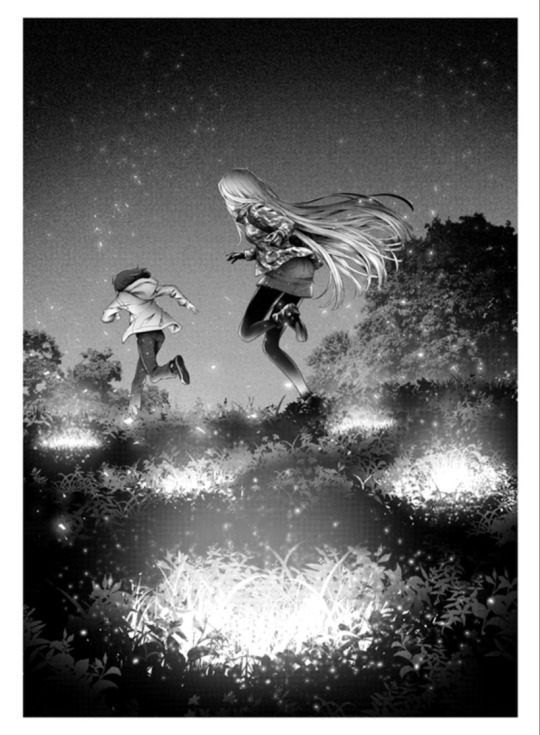
Miyazawa’s other secret weapon is, as he describes it, “Yuri of absence.” Relying on the principles of Strong Yuri, that Yuri is fiction made real through emotions, Yuri of absence extends these parameters outside of characters. As Strong Yuri relies on feeling, not observable data like characters, anything that invokes two women’s feelings together is Yuri. It could be a song, or an empty bench, as one can imagine two women on it and feel emotions tied to that. Of course, taken to its extreme, nearly anything can then be Yuri, as I have joked before, gesturing to an empty chair proclaiming, “Behold, a Yuri!” However, Miyazawa uses this Yuri of absence sparingly, rendering it closer to scenic Yuri’s intimacy.
Scenic Yuri, a particular type of Yuri of absence, focuses exclusively on setting and imagery, a feature that works particularly well in science fiction as according to Masahiro Noda’s “sci-fi is all about images.” Traditional Yuri uses character interaction and supplements it with images and sights that help communicate characters’ emotions and intimacy, like fleeting shots or descriptions of the sky. Take the shot from Kase-san and Morning Girls where Yamada stands by the bus stop. The distance between the girls, the tree in the foreground on Yamada’s side, and the pole on the right all invoke emotion and help tell the girls’ story, distanced by their differences and upcoming life paths. Now remove the girls, the scene remains, as does its meaning and emotions, whether the characters are present or not.

Scenic Yuri is employed vigorously in more male-targeted S Yuri (a minority of the Class S genre). Here, the imagery provides intimacy so that the voyeuristic viewer could look into the characters’ private and forbidden lives, specifically the girls in all-girls schools. Take the shot from Strawberry “Mo Man May Enter Here” Panic. The sweeping view of the Strawberry Dorms atop Astraea Hill, a place where men are forbidden, gives the consumer an exclusive inside look at the private home of its subjects. Otherside Picnic uses these same scenic Yuri principles in its descriptions. In this case, the intimacy does not come from a place where men are prohibited or a shot describing women’s relationships. Instead, the reports of abandoned ruins and deserted open fields where only Toriko and Sorawo exist provide extreme intimacy. It is an emotional view of two of the few women in this world with nothing but each other; thus, Yuri.

Yuri science fiction is easily the most exciting place in the genre right now. Its creators are experimenting with new theories and storytelling methods to expand the boundaries of what science fiction or Yuri alone could never do. The subgenre has undoubtedly come a long way from its Weak Yuri roots and continues to grow. Industry leaders like Miyazawa and Mizoguichi will continue to push into this excited and uncharted territory, using tactics new and old to bring together Yuri’s emotional and romantic core with science fiction’s epic and provoking imagery. I have few doubts that we have seen all these pioneers have to offer and that Last and First Idol and Otherside Picnic are just the beginning.
Sources
Friedman, Erica, and Kishiji Bando. “Shoujo Yuri Manga Guide.” Yuricon, 29 Mar. 2011, https://www.yuricon.com/oldessays/shoujo-yuri-manga-guide/.
Hanson, Katherine. Yuri No Boke 百合のボケ 〜百合が好きだ〜: Sci-Fi Yuri Anime and Manga. 17 Feb. 2012, http://yurinoboke.blogspot.com/2012/02/sci-fi-yuri-anime-and-manga.html.
Kit, et al. Tomo Choco Podcast Episode 58: A Trip to the Otherside. https://directory.libsyn.com/episode/index/show/tomochoco5287491142565609/id/14974343. Accessed 18 Feb. 2021.
Komatsu, Mikikazu. “S-F Magazine’s Yuri-Themed Issue Gets Reprints Before Release.” Crunchyroll, https://www.crunchyroll.com/anime-news/2018/12/18/s-f-magazines-yuri-themed-issue-gets-reprints-before-release. Accessed 18 Feb. 2021.
Kusano, Gengen. “[R-18] #SF #矢澤にこ 【SF合同サンプル】最後にして最初の矢澤 - 節足原々(セッソクハラハラ)の小説.” Pixiv, https://www.pixiv.net/novel/show.php?id=4992326. Accessed 18 Feb. 2021.
M Alan Kazlev. “The Scale of Hardness in Science Fiction.” Futurism, https://vocal.media/futurism/the-scale-of-hardness-in-science-fiction. Accessed 18 Feb. 2021.
Masayuki Sakoi. Strawberry Panic S01:E21 - Like a Flower. Madhouse, 2006. tubitv.com, https://tubitv.com/tv-shows/558933/s01-e21-like-a-flower.
Maser, Verena. Beautiful and Innocent: Female Same-Sex Intimacy in the Japanese Yuri Genre. ubt.opus.hbz-nrw.de, https://ubt.opus.hbz-nrw.de/frontdoor/index/index/docId/695. Accessed 18 Feb. 2021.
Miyazawa, Iori, et al. Yuri Made Me Human, Part 2. Translated by Kati_lilian, 24 Aug. 2018, https://teletype.in/@kati_lilian/S1yjBCJgH.
Miyazawa, Iori, and Rikimaru Mizoguchi. Yuri Made Me Human — Interview with Iori Miyazawa. Translated by kati_lilian, May 2018, https://teletype.in/@kati_lilian/SJA8KwjjN.
Moore, Caitlin, et al. “The Winter 2021 Preview Guide - Otherside Picnic.” Anime News Network, https://www.animenewsnetwork.com/preview-guide/2021/winter/otherside-picnic/.167892. Accessed 18 Feb. 2021.
Nicki “YuriMother” Bauman. The History and Future of Transgender Representation in Yuri - The Secret Garden, January 2021 | YuriMother on Patreon. https://www.patreon.com/posts/45495024. Accessed 18 Feb. 2021.
---. “Yuri Is for Everyone: An Analysis of Yuri Demographics and Readership.” Anime Feminist, 12 Feb. 2020, https://www.animefeminist.com/yuri-is-for-everyone-an-analysis-of-yuri-demographics-and-readership/.
Pinansky, Sam. Interview with J-Novel Club’s Sam Pinansky. Interview by Erica Friedman, 1 Oct. 2019, https://okazu.yuricon.com/2019/10/01/interview-with-j-novel-clubs-sam-pinansky/.
Sarantos, Constance. “How Otherside Picnic Breaks the Yuri Genre Mold.” CBR, 10 Jan. 2021, https://www.cbr.com/otherside-picnic-breaks-yuri-genre-mold/.
“「SF冬の時代」は雪解けを迎えた 早川書房・溝口力丸 Vol.1.” KAI-YOU Premium, https://premium.kai-you.net/article/201. Accessed 18 Feb. 2021.
Snapshot. https://www.cbr.com/otherside-picnic-breaks-yuri-genre-mold/. Accessed 18 Feb. 2021.
Takuya Satou. Watch Kase-San and Morning Glories. Sentai Filmworks, 2018. vrv.co, https://vrv.co/series/GYQWD1X1Y/Kase-san-and-Morning-Glories.
Walter, Damien. “Science Fiction vs SciFi vs SF: What Is the True Definition?” Damien Walter, 7 Aug. 2018, https://damiengwalter.com/2018/08/07/science-fiction-vs-scifi-vs-sf-what-is-the-true-definition/.
YuriMother. “LGBTQ Light Novel Review - Otherside Picnic Vol. 1.” The Holy Mother of Yuri, 12 Dec. 2019, https://yurimother.com/post/189635367305.
This article was originally written in 2021 as part of The Secret Garden, YuriMother's exclusive series of articles, available only for Patrons. If you want to access other articles and help support Yuri and LGBTQ+ content, subscribe to the YuriMother Patreon.
#Yuri#otherside picnic#the secret garden#miyazawa yuri#yuri of absence#scenic yuri#lgbt#lgbtq#lgbtq+#queer#gay#lesbian
403 notes
·
View notes
Text

.301. Uranus
#geometry#uranus#planet#moons#planetary#solar system#illustration#graphic art#digital art#blue#heaven#light#celestial#celestial bodies#cosmos#cosmic vision#visual art#visual continuum#continuum#space art#universe#space time
30 notes
·
View notes
Text

In Our Wake
Amber Spindel
from the website: In this watercolor painting, I sought to capture the essence of our ancestors and the enduring legacy they have bestowed upon us. The orca, adorned with a galaxy of dark saturated magentas and teals, serves as the focal point—a majestic being that embodies strength, wisdom, and the spirit of the ocean. Its vibrant hues are a nod to the mysteries of the cosmos and the deep, uncharted waters that our ancestors once navigated.
As you follow the orca to its dorsal fin, you are met with a mesmerizing wake of swirling Native designs. These intricate patterns are not mere decorations; they are a visual representation of our colorful and vibrant past. Each curve and line is a tribute to the traditions, stories, and lives that have shaped our identity.
My people, known as the Strong People, have a deep association with the orca. This connection has been a source of inspiration for me in creating this piece. It is through their teachings and the inspiration they provide every day that I find the strength to create art that honors our heritage.
This artwork is a heartfelt homage to those who came before us. It is a reminder that their traces are indelibly etched into our history, guiding us as we move forward. The orca, with its cosmic colors and the dynamic wake it leaves behind, symbolizes the connection between past, present, and future—an eternal continuum of cultural legacy and guidance.
46 notes
·
View notes
Quote
Touch is the sensory mode which integrates our experiences of the world and of ourselves. Even visual perceptions are fused and integrated into the haptic continuum of the self; my body remembers who I am and how I am located in the world. My body is truly the navel of my world, not in the sense of the viewing point of the central perspective, but as the very locus of reference, memory, imagination and integration. All the senses, including vision, are extensions of the tactile sense; the senses are specialisations of skin tissue, and all sensory experiences are modes of touching, and thus related to tactility. Our contact with the world takes place at the boundary line of the self through specialised parts of our enveloping membrane.
Juhani Pallasmaa, The Eyes of the Skin: Architecture and the Senses
#quote#Juhani Pallasmaa#Pallasmaa#architecture#architectural theory#physiology#sense perception#perception#imagination#human body#sensory#experience#The Eyes of the Skin#memory#biology#observation#seeing#haptic#touch
185 notes
·
View notes
Text
Medium talk is worse than small talk and probably what we're all most afraid of
We all know Small Talk:
hi, how are you, nice weather, how about them (insert sports team here).
Small talk follows algorithms and a kind of ritual pattern. It's the kind of appropriate conversation level for interacting with retail workers in public, and total strangers.
We also all know Big Talk. (I'm only calling it that as the logical inverse implied by Small Talk.) Which is basically where a high degree of familiarity is assumed. A common ND fuckup is conversing in conversational modes that, to many of the general population, are reserved for high familiarity. Either in terms of talking at length about a topic (which I feel is something that was actually more socially acceptable in the past, but has become broadly unacceptable over time; this was NOT really part of a diagnostic category in the 70s) or in terms of overfamiliarity/not being at the right level of social distance from the person for the thing you're talking about.
Most people rely on lots of context cues that inform how they will hear what the other person is saying, and those context cues may not be there for a near-stranger. All they're left with is the most uncharitable possible assumption about your intentions.
So with this in mind, this leaves me with the WORST conversation category, that nobody acknowledges, because we're stuck on Small Talk and Big Talk:
Medium Talk.
You actually need something in common with the other person or something you relate to, to really successfully do Medium Talk. Small talk can be done with total strangers you're never going to see again, and Big Talk can cut past a lot of stuff; I don't need every social belongingness or ideological thing or hobby in common with my family members, or other people in a high-trust relationship with me, to have a meaningful conversation with them.
Medium Talk is actually where a lot of the tripwires and landmines are.
People are making decisions to escalate or de-escalate here, and listening for loyalty indicators. You run the risk of keeping things superficial while missing an actual connectedness bid, or of being overly familiar - or getting too comfortable and offending/scaring the other person before they have any context for processing what you're saying to them.
Medium Talk is when you're moving from the Social Niceties, along the continuum toward Big Talk. You're dipping your toe in the water, moving toward the deep end.
Average to high social skills people will often throw out feelers about escalating the conversation. In the 90s, LGBT people would sometimes drop hints about some or other thing that only other LGBT people would know about, based upon some kind of context cue. There is ultimately some of this same dynamic going on with some forms of nerdy gatekeeping ("name one star war") albeit in a clumsy way.
But people do it all the time.
I think there is a tendency for some people to assume talk is 100% verbal while habitually ignoring the visual and relational context cues that are processed as communication. It's especially hard for people who *can't* process that information, but I think that there are lots of reasons some people end up just not learning to do it.
People often escalate small talk based upon presence of some kind of marker such as a nerdy enamel pin, or a sports jersey. This is what wearing tons of geek swag is actually all about. 70s-80s social skills guides and advice for single people, often advised having/carrying/wearing some kind of "conversation starter."
Once I learned about 70s/80s/90s gay hanky code, I realized that there was a lot of this going on in all kinds of ways and that people scan other people visually for various kinds of context cues for the escalation of small talk.
A big problem is getting too "real" too fast, and people in the Medium Talk Zone will commonly use celebrities, low-stakes fandom stuff, and the like as socially acceptable proxies for discussing their viewpoints while saving face. If you are still in a low trust space, then the problem with just blurting stuff out to another person is that they don't know you well enough to have any context for what you are saying.
Most people are processing a ton of context cues while you are speaking, besides the words you are saying. When still in a low trust zone, you are likely to be taken in bad faith. You saying the same thing that their friend said, is not being heard by their brains as actually the same thing.
Nor is your presentation of the project being heard by the boss as being the same presentation that is being given by the shinier co-worker who steals it from you.
Most people don't just process the information, they process *who is saying it* as a *necessary part* of that information.
And this is where Medium Talk is so dicey.
Small Talk? No problem. Most of us can do it on a good day and most of us do it without realizing how much we do it.
43 notes
·
View notes
Text
The Killing Vote - all these excellent dramas are killing my free time
Full disclosure - I rarely like police/killer/etc dramas (or narratives in any medium) and only checked out The Killing Vote because of my utterly irrational and unhinged thing for Park Hae Jin. We are all anonymous here so I can admit that when he first showed up on the screen I literally exclaimed "oh, fuck me!" in Pavlovian delight. The man just does it for me, OK?
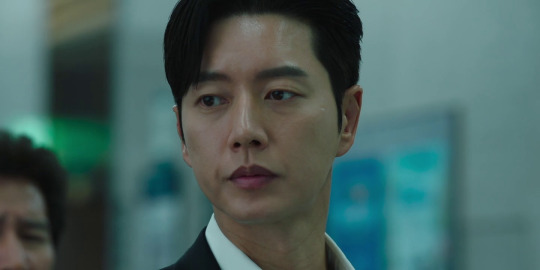
(That's not his first moment but I like this cap.)
However, to my pleasant surprise, as I expected to be forwarding for a few glimpses of PHJ, I really really REALLY like the dark and unhinged the first episode.
The set-up is fairly simple, a little like Devil Judge Only Not Legal. Basically some mysterious dude sends "questions" to all citizens of Korea to vote on whether some criminal who escaped sufficient punishment should die or not; if majority votes yes, he kills them. The government is in uproar and forms a team to track the man down. Park Hae Jin's character is the leader of the team (about him more later.)
OK, why do I love it? It's a very dark show - I don't mean just visually (so many scenes take place at night) but narratively - the place is portrayed as a cesspit of humanity and nothing is clear cut. In fact, the drama very interestingly (it remains to be determined if they will develop it properly) posits of how much everyone is on continuum of vigilantism and what is acceptable. For example, our protagonist, the cop played by PHJ is, while clearly not a murderer, is hella unhinged.

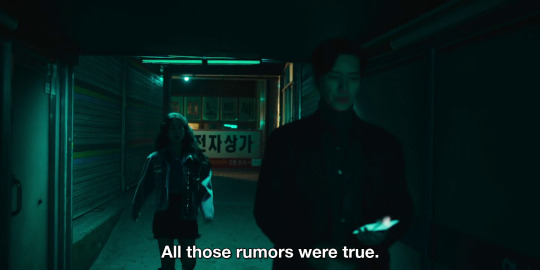


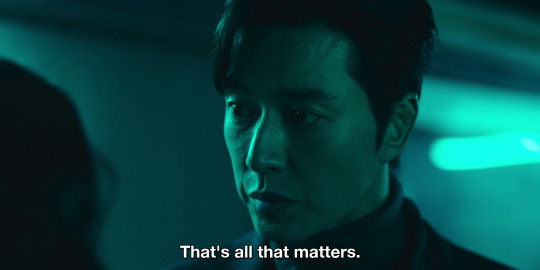
He himself is a vigilante with a badge, which can be a very dangerous thing (we don't know why he is so relentlessly driven but if I were a betting person, I'd bet that scene in the prologue, where he had to arrest a man who killed his daughter's killer because said killer walked is one of his goads.)
Honestly, one of the big draws to me is just how utterly unhinged he is. He really has no stops. Look at him with the human trafficker:


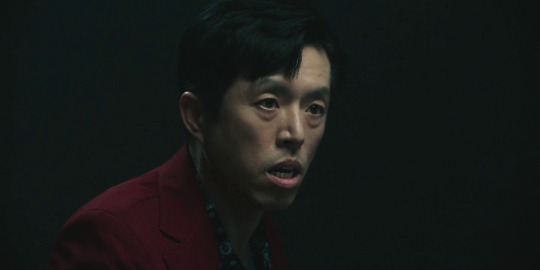

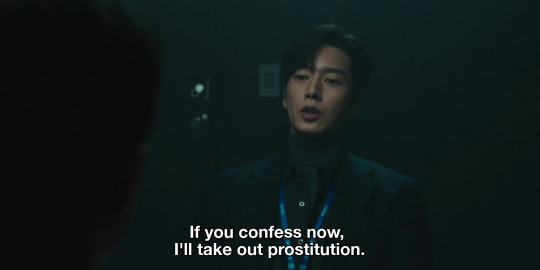

And then he makes sure the camera won't catch it and bangs his own head on the table a few times as hard as he can until it bleeds. !!!!!!!
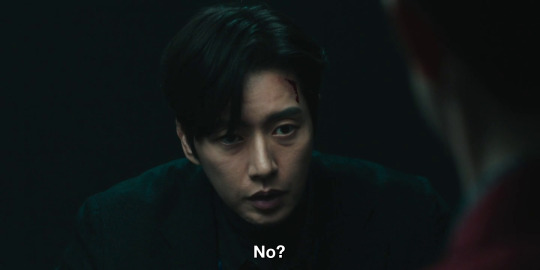
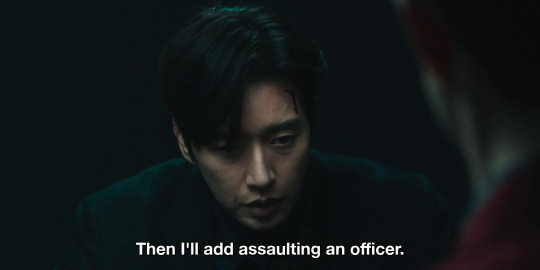
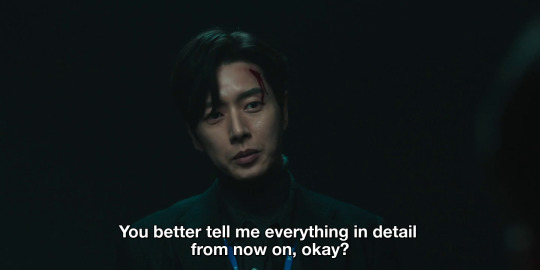
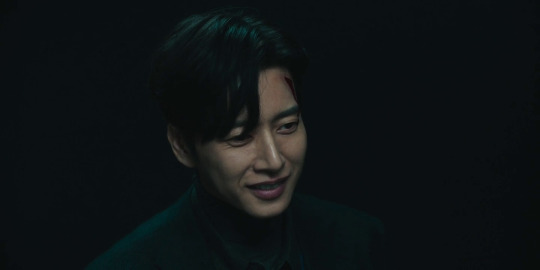
He has no stops and you begin to wonder if it's really a difference merely in degree of extreme between him and the killer he is supposed to catch. You can tell a large part of him sympathizes.


The matter of fact his assistant says as he's bandaging up PHJ's face after that little stunt says volumes.
One of the reasons I love PHJ is his unnerving intense vibe on screen - he can play someone where you don't know if they will be loving or they are secretly a serial killer, and do so incredibly convincingly. (The first drama I've seen him in was East of Eden, a sprawling epic of nurture versus nature, where he was the swapped at birth bio son of a noble worker brought up by evil businessman and he was magnetic and repulsive all at once - his "father" was so unhappy about him having genuine feeling for the girl he was obsessed with since childhood, he paid someone to drug and force him into sex and later sonny turned around and raped the girl he was obsessed with since childhood because monsters and abuse beget monsters and abuse. Childhood friends to rapist and victim is quite an arc. The drama tried to later redeem him with mixed success - it was a vvvvvv long drama - whether it worked out is something up to each viewer to decide - I - am biased by his hotness in the safe confines of fiction - but he was a truly fascinating character to watch.) The whole episode he is so on edge; you can see it burn in him when he has to protect the scumbag who got early release despite being a rapist, abuser etc etc and a part of him definitely sympathizes with the killer who eventually does the man in. His no holds barred character appears to be why despite his insane success rate he's not promoted and disliked by higher ups. He and cyber whistleblower cop girl both appear to be not good at fitting in.
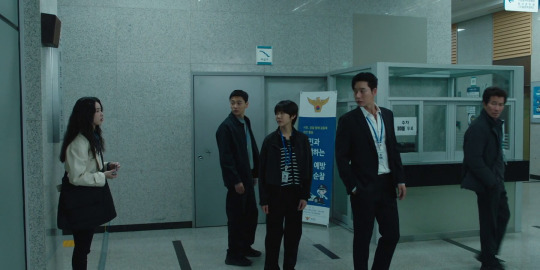

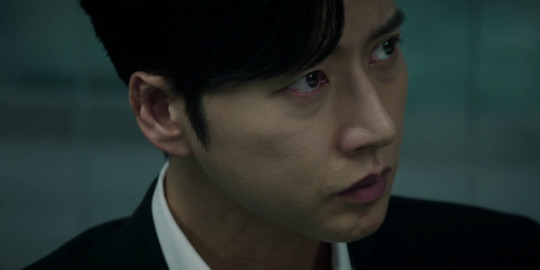
This is not a drama that is likely to have any romance (alas) but I actually do like the vibe between them - they are very very different but both pretty damn unhinged.
PS This bit from East of Eden is basically what crack is like:
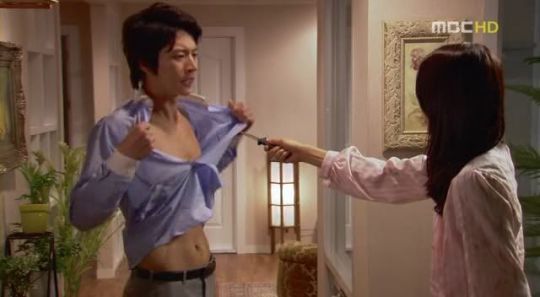

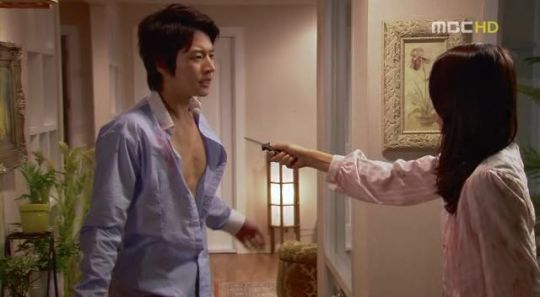


Here is Park Hae Jin ripping open his shirt so as to make it easier for Han Ji Hye to stab him. Ahahahaha god I miss old kdramas and their insanity.
92 notes
·
View notes
Note
not Diagnosing with Disorder, but having thought "you're so real for this" on many posts (forgetting what distress feels like, doing the same for happiness, spotlighting little details of experiences) I do wanna share it's been helpful for me to say "I'm the type of person that gets tunnel-vision." It's neutral, a good visual metaphor, reminds me to relax my perma-furrowed brow, and even when I just *can't* shift focus it reminds me there's more. Take it or leave it, & keep being insightful 👍
yes i use that one sometimes! its also a nice feeling to know other people are like this as well... i don't really like, get the hyperfocus of tunnel vision like losing the ability to reason? so i also like to think of this as on a continuum with my limited working and long term memory – i can't really hold a lot of context in my head and i realised i tend to hold fewer memories than many people. so it makes sense to forget sensations!
12 notes
·
View notes